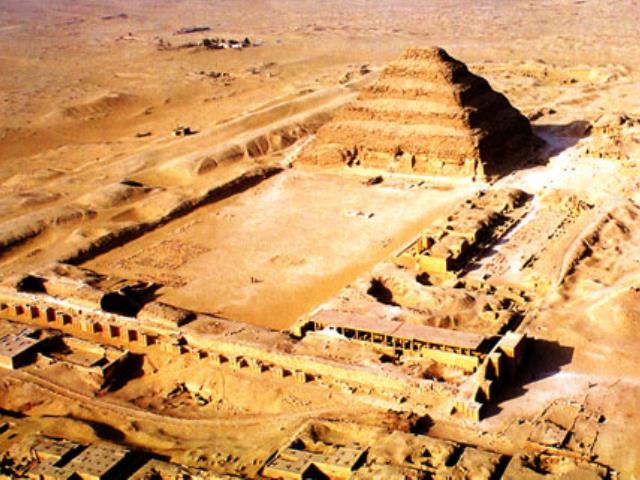The Step Pyramid Complex of Djoser

Djoser’s Step Pyramid in Saqqara is one of Egypt’s most iconic monuments—and rightfully so. It constitutes a significant historical turning point in ancient Egyptian funerary monuments, revolutionizing stone architecture and royal burials. In addition to its beauty and monumental scale, it is not only the very first pyramid that the ancient Egyptians ever built, but also the oldest known ancient Egyptian stone structure.
The sheer age of the Step Pyramid is astounding. It was built in the early Third Dynasty, during the reign of King Netjerykhet (c.2667–2648 BC), who is now more well-known as Djoser.
Before his reign, royal and elite Egyptians were buried in mastabas. This word, meaning “bench” in Arabic, refers to a type of funerary structure that was generally rectangular in shape and built over the tomb proper, which was underground. The Step Pyramid is composed of six stacked mastabas, thus creating the stepped effect. Imhotep, its architect, may very well have been responsible for this major innovation.
At one end of the pyramid complex, a structure known as the South Tomb is believed to have acted as an additional, symbolic, tomb for Djoser, perhaps reflecting his role as the dual king of both Upper and Lower Egypt. Djoser’s pyramid complex also has some unique features. The two courts in front of the pyramid recreate the setting of the Sed Festival, a royal ceremony aimed at rejuvenating the king and regenerating his power. The structures on the side of the eastern court emulate in stone the ephemeral shrines that were used in this festival, thus ensuring that the king could continue being rejuvenated forever.


